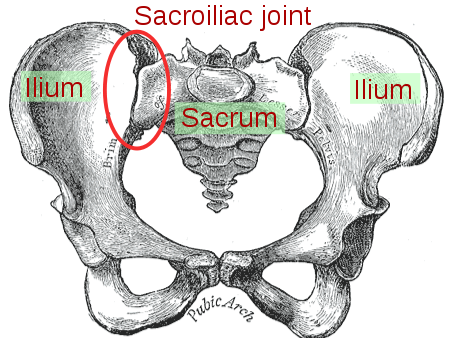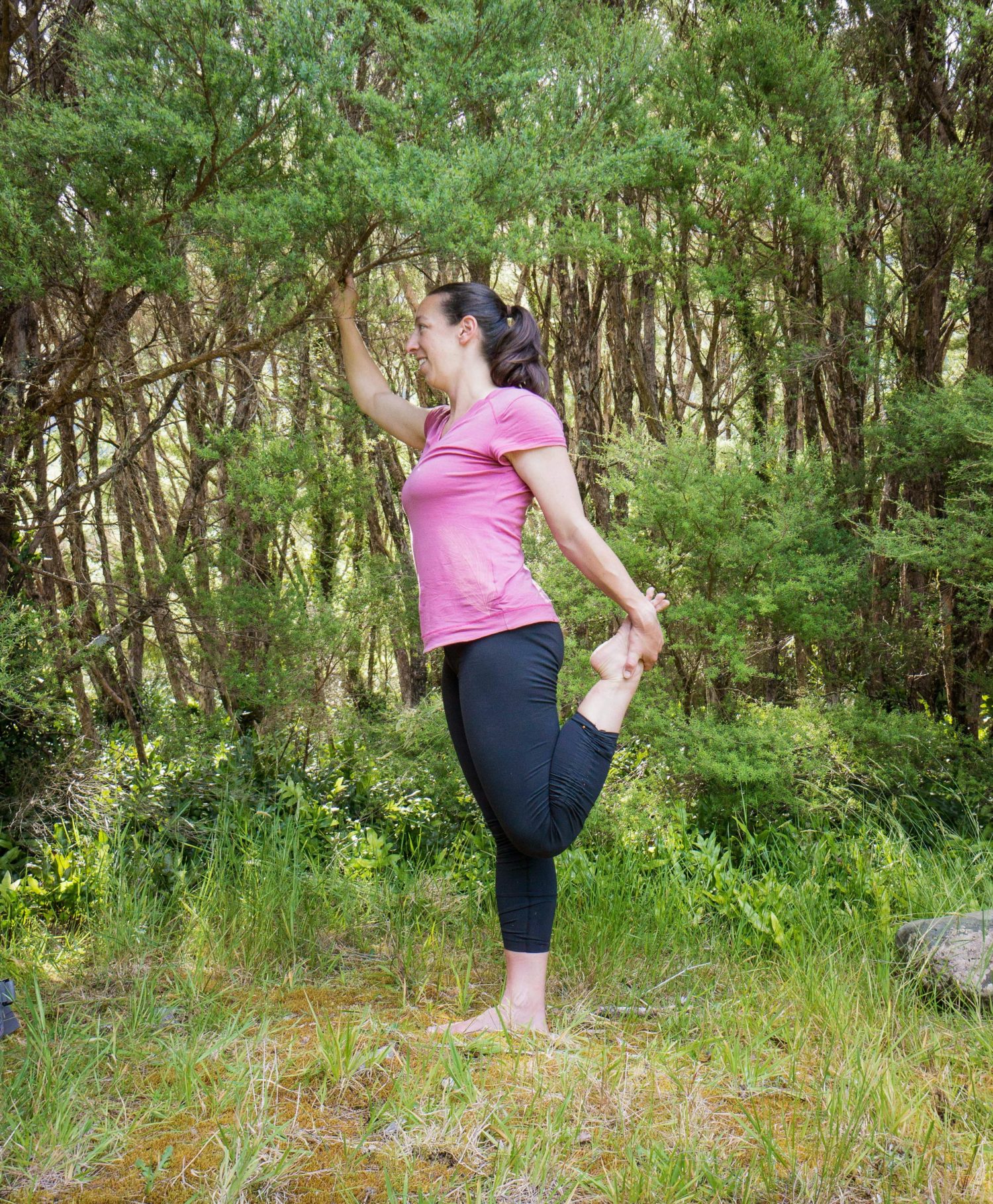I was about to write a post about pigeon pose and how this affects your sacroiliac joint. But I realised I had never written about the sacroiliac joint. So I thought I better start with this important part of anatomy. It’s also known as the SI joint.
The SI joints are located at the back of your hip, or the back of your pelvis. You have two SI joints – one at the back of either hip. A joint is the location where two bones meet. In this case, the SI joint is where the sacrum bone and the ilium (hip bone) meet.

The SI joint provides stability for the pelvis and helps distribute forces between the hips and spine. It can act as a bit of shock absorber and helps distribute weight to help you effectively walk.
The SI joint itself has a very limited range of movement. In fact, for a long time, researchers thought the joint was fused and had no movement! Strong ligaments and bone structure (how your bones fit and stack together) provide the stability for this joint. The stability of this joint in particular relies a lot on the ligaments. If those ligaments become damaged or loose (or lengthen) you can develop too much mobility or too much range of motion in this joint, and that can cause problems in this joint and other joints, as well as the muscles and fascia. When the ligaments don’t work effectively to provide stability, as you have already read, the muscles and other connective tissue will have to work harder to maintain stability for the SI joint.
A number of things can result in damage or injury to the joint, including the ligaments and the bone structure. This usually happens through forceful or repetitive uneven movement of the hips. Forceful movement could come from a fall or car accident. Repetitive uneven movement could result from biomechanics (like when one leg is longer than the other), compensation for injuries to the knee or years of dancing. Once ligaments are damaged, it can hard for them to recover or heal back to their normal level of function. That can result in pain, but also means nearby muscles and connective tissue will have to work hard to support this joint.
You can learn more from the Wikipedia or this brief book excerpt on Anatomy, Abdomen and Pelvis, Sacroiliac Joint.




